Being a responsible car owner goes hand in hand with proactive maintenance. However, understanding the intricate world of car mechanics and its components can feel overwhelming. To make informed decisions when car repairs become necessary, it’s essential to familiarize yourself with the key mechanical parts of your vehicle.
Knowing which car parts can pose a safety risk if they malfunction, and which are relatively inexpensive to maintain, is crucial for any car owner.
Let’s delve into the inner workings of a car, from the engine’s pistons to the ignition system’s spark plugs, and explore the essential components that constitute the anatomy of any vehicle.
Engine Components
Cylinder Block and Pistons
The cylinder block serves as the foundational structure of the engine, a robust housing containing individual cylinders. These cylinders are hollow, precisely engineered tubes where the controlled combustion process takes place.
Within these cylinders, pistons move in an up-and-down motion, securely held in place by piston rings. Pistons are critical in converting the explosive energy generated from combustion into mechanical force, which propels the vehicle. This piston-cylinder interaction is fundamental to the engine’s operation, making it the primary source of power generation in your car.
Crankshaft and Camshaft
At the core of the engine’s intricate mechanics are the crankshaft and camshaft. The crankshaft is responsible for converting the linear, up-and-down motion of the pistons into rotational energy. This rotational energy is the driving force that ultimately powers the wheels of your vehicle.
Simultaneously, the camshaft plays a crucial role in managing the timing of the engine’s valves. It ensures that the intake and exhaust valves open and close at precisely the right moments during the combustion cycle. This precise timing is essential for efficient combustion and smooth engine operation. Together, the crankshaft and camshaft synchronize the internal combustion process, contributing to the car’s smooth and propulsive motion.
Intake and Exhaust Manifolds
Imagine the intake and exhaust manifolds as the lungs of your car, responsible for managing airflow in and out of the engine. The intake manifold draws fresh air into the engine cylinders, providing the oxygen necessary for combustion. Conversely, the exhaust manifold collects the spent gases produced after combustion and directs them out of the engine, through the exhaust system.
These manifolds are critical for optimizing the engine’s performance. They ensure a balanced and efficient combustion process, maximizing power output while minimizing fuel consumption and emissions. It’s important to note that electric vehicles do not have intake and exhaust manifolds as they do not rely on internal combustion engines.
Powertrain and Gearboxes
Different Types of Gearboxes, or Transmissions
The gearbox, also known as the transmission, is a crucial component in transferring power from the engine to the wheels, allowing the car to operate at varying speeds and loads efficiently. Different types of gearboxes offer distinct driving experiences and functionalities.
Manual Gearboxes
Manual gearboxes provide the driver with complete control over gear selection. These transmissions require the driver to manually engage and disengage gears using a clutch pedal and gear stick. This manual operation allows drivers to adapt to diverse driving conditions, such as road slipperiness, acceleration needs, and deceleration scenarios, providing a more engaging and involved driving experience.
Automatic Gearboxes
Automatic gearboxes simplify driving by automatically shifting gears without driver intervention. This seamless gear shifting is achieved without the need for a clutch pedal or manual gear lever operation. Automatic transmissions utilize a torque converter, a type of fluid coupling, to ensure smooth and effortless gear changes, enhancing driving comfort and convenience, particularly in stop-and-go traffic.
Continuously Variable Transmissions (CVTs)
Continuously Variable Transmissions (CVTs) represent a more advanced gearbox technology. CVTs employ a system of pulleys and belts to offer an infinite range of gear ratios. This design results in exceptionally smooth and continuous acceleration, eliminating the distinct gear shifts found in traditional automatic and manual transmissions. CVTs are known for optimizing fuel efficiency and dynamically adapting to changing driving conditions, making them a sophisticated choice for modern vehicles.
Differential and Driveshaft
In the car’s power delivery system, the differential and driveshaft work in conjunction to transmit engine power to the wheels. The driveshaft is the component responsible for carrying the rotational power generated by the transmission towards the wheels.
The differential plays a critical role in distributing this power evenly to the wheels, especially when the car is turning. It allows the outer wheels to rotate faster than the inner wheels during a turn, preventing wheel slippage and ensuring smooth cornering. Together, the driveshaft and differential create a harmonious system that enables efficient and controlled vehicle motion.
Clutch and Torque Converter
Within the realm of gearboxes and power transmission, the clutch and torque converter serve essential but distinct roles. In manual transmissions, the clutch is a mechanical device that allows the driver to temporarily disconnect the engine from the gearbox. This disconnection is necessary for smooth gear changes, enabling the driver to select different gears without grinding or damaging the transmission.
In automatic transmissions, the torque converter replaces the clutch. It is a fluid coupling that smoothly transfers power from the engine to the transmission. The torque converter allows for seamless gear shifts and prevents engine stalling, contributing to the ease and convenience of automatic driving.
Fuel and Ignition Systems
Fuel Injection System
The fuel injection system is a critical component in modern engines, ensuring optimal combustion efficiency. Fuel injectors are precision devices that deliver a finely atomized spray of fuel directly into the engine cylinders. This precise fuel delivery enhances engine efficiency, increases power output, and reduces fuel consumption compared to older carburettor systems.
Fuel injection technology replaced carburettors, which were prone to issues like clogging and wear. Fuel injectors offer improved fuel distribution, enhanced engine performance, and lower emissions, making them a standard feature in contemporary vehicles.
Spark Plugs and Ignition Coils
The ignition system is responsible for initiating the combustion process in gasoline engines, and it primarily consists of spark plugs and ignition coils. Spark plugs are small but vital components that generate the spark needed to ignite the air-fuel mixture within the engine cylinders.
Ignition coils are responsible for amplifying the voltage from the car’s electrical system to a level high enough to create a spark at the spark plug gap. The synchronized operation of spark plugs and ignition coils is crucial for efficient and rapid ignition, which is essential for optimal engine performance, responsiveness, and fuel economy.
Throttle Body and Air Intake System
The throttle body and air intake system work in tandem to regulate the amount of air entering the engine. The throttle body contains a valve, controlled by the accelerator pedal, that adjusts the airflow into the engine. By controlling the airflow, the throttle body dictates engine power output and speed.
The air intake system ensures that the engine receives a clean and efficient supply of air. It typically includes an air filter to remove dust and debris from the incoming air, preventing damage to engine components and ensuring optimal combustion. Together, the throttle body and air intake system manage the engine’s “breathing,” which is critical for achieving peak power, fuel efficiency, and overall performance.
Cooling and Lubrication
Radiator and Cooling Fans
The radiator and cooling fans are the primary components responsible for preventing engine overheating in internal combustion engine vehicles. The radiator is a heat exchanger that dissipates heat from the engine coolant. Hot coolant from the engine circulates through the radiator, where it is cooled by airflow.
Cooling fans enhance airflow through the radiator, especially when the car is stationary or moving slowly, maximizing heat dissipation. The radiator and cooling fans work together to maintain the engine at an optimal operating temperature, preventing damage from overheating and ensuring efficient engine performance.
Water Pump and Hoses
The water pump and hoses are integral parts of the engine cooling system, working alongside the radiator and fans to regulate engine temperature. The water pump is responsible for circulating the coolant throughout the engine and cooling system. It ensures that coolant flows continuously, absorbing heat from the engine components.
Hoses provide the pathways for coolant circulation, connecting the engine, radiator, and other cooling system components. These hoses must be robust and heat-resistant to withstand the high temperatures and pressures within the cooling system.
EV Battery Cooler System
Electric vehicles (EVs) utilize a different type of cooling system specifically designed for cooling the battery pack and electric motor. The battery cooler system in an EV performs a similar function to the radiator in a traditional car, dissipating heat from the battery coolant.
Maintaining an optimal temperature for the battery and electric motor is crucial for the longevity, efficiency, and performance of an EV. Overheating can degrade battery performance and lifespan, while proper cooling ensures efficient operation and optimal range.
Oil Pump and Oil Filter
The oil pump and oil filter are essential components of the engine lubrication system, responsible for maintaining engine health and longevity. The oil pump circulates engine oil throughout the engine, ensuring that critical components are continuously lubricated. Engine oil reduces friction between moving parts, preventing wear and tear and dissipating heat.
The oil filter removes impurities and contaminants from the engine oil, keeping it clean and effective. A clean oil filter prevents abrasive particles from circulating within the engine, further protecting engine components and extending engine life.
Electrical System
Battery
The car battery is the primary source of electrical energy for the vehicle. It provides the initial power to start the engine and supports all electrical functions when the engine is not running. All cars, including EVs, rely on a 12V battery for powering accessories and control systems.
A healthy and fully charged battery is crucial for reliable vehicle operation. Battery faults or reduced capacity can lead to starting problems and malfunctions of electrical components.
Alternator
The alternator is an electrical generator driven by the engine. Its primary function is to convert mechanical energy from the engine’s rotation into electrical energy. The alternator recharges the battery while the engine is running and supplies power to the car’s electrical system, including lights, infotainment, and other accessories.
The alternator also regulates the voltage in the electrical system, ensuring a consistent power supply and preventing overcharging of the battery. A properly functioning alternator is essential for maintaining battery charge and powering the vehicle’s electrical components while driving.
Starter Motor and Solenoid
The starter motor and solenoid work together to initiate engine operation. The starter motor is a powerful electric motor that engages with the engine’s flywheel to crank the engine and start the combustion process.
The solenoid is an electromagnetic switch that activates the starter motor when the ignition key is turned. It delivers a high current to the starter motor, enabling it to turn the engine. This coordinated action of the starter motor and solenoid converts electrical energy into mechanical motion, initiating the engine start-up sequence.
Wiring Harness and Fuses
The wiring harness is a network of wires that distributes electricity throughout the vehicle, connecting various electrical components to the power source and control units. It acts as the car’s electrical nervous system, carrying power and signals to all electrical devices.
Fuses are safety devices strategically placed within the wiring harness to protect against electrical overloads. They are designed to break the circuit if excessive current flows through them, preventing damage to electrical components and reducing the risk of electrical fires. Together, the wiring harness and fuses ensure a safe and organized flow of electrical power throughout the vehicle.
Suspension and Steering
Shock Absorbers and Struts
Shock absorbers and struts are crucial components of the car’s suspension system, responsible for ride comfort and vehicle stability. Shock absorbers are hydraulic devices that dampen the oscillations of the car’s springs, controlling unwanted bouncing and vibrations. Typically, cars have four shock absorbers, one at each wheel.
Struts are a combination of shock absorbers and structural support, often found in the front and sometimes rear suspension systems. Struts provide both damping and structural integrity, contributing to vehicle stability and handling. Together, shock absorbers and struts enhance driving comfort by minimizing the impact of bumps and uneven road surfaces, ensuring a smoother and more controlled ride.
Control Arms and Bushings
Control arms and bushings are essential components in the chassis, contributing to suspension stability and smooth handling. Control arms are hinged suspension links that connect the wheel hubs to the vehicle’s frame or subframe. They allow the suspension to move up and down while maintaining wheel alignment.
Bushings are flexible rubber or polyurethane components that are inserted into the control arm joints. Bushings provide cushioning and flexibility, absorbing road vibrations and reducing noise and harshness transmitted to the cabin. This combination of control arms and bushings absorbs road imperfections, maintains tire alignment, and ensures a balanced and comfortable ride.
Power Steering Pump and Rack
The power steering pump and rack are key components of the power steering system, enabling effortless steering and maneuverability. The power steering pump is a hydraulic pump that generates hydraulic pressure. This pressure is then used to assist the driver in steering the vehicle, reducing the effort required to turn the steering wheel, especially at low speeds.
The power steering rack converts the hydraulic pressure from the pump into linear motion, which turns the wheels. Together, the power steering pump and rack provide precise and smooth steering, making navigation easier and enhancing driving comfort and control.
Braking System
Brake Pads
Brake pads are friction components in the braking system that are essential for slowing down or stopping the vehicle. Typically made of composite materials, brake pads are pressed against the brake rotors when the brake pedal is applied. This friction converts kinetic energy into heat, causing the vehicle to decelerate.
Brake pads are designed to withstand high temperatures and provide reliable braking performance. However, they are subject to wear over time due to friction and heat. Regular inspection and replacement of brake pads are crucial for maintaining effective braking performance and safety.
Brake Calipers
Brake calipers are housing units located around the brake rotors. They contain pistons that, when hydraulic pressure is applied from the brake master cylinder, clamp the brake pads against the rotor. This clamping action generates the friction necessary for controlled deceleration and stopping.
Brake calipers must function with precision and reliability to ensure responsive and effective braking. They are critical components in translating brake pedal input into actual braking force at the wheels, contributing significantly to overall driving safety.
Exhaust System
Catalytic Converter
The catalytic converter is a vital component in the exhaust system of internal combustion engine vehicles. Its primary function is to reduce harmful emissions by converting toxic gases, such as carbon monoxide, hydrocarbons, and nitrogen oxides, into less harmful substances through a chemical process called catalysis.
The catalytic converter plays a significant role in reducing vehicle emissions and contributing to cleaner air and environmental health. It is a key component in meeting emission regulations and ensuring that vehicles operate in an environmentally responsible manner.
Muffler and Resonator
The muffler and resonator are components within the exhaust system that work together to control and reduce exhaust noise. The muffler is primarily responsible for reducing the overall loudness of the exhaust noise. It uses chambers and baffles to dampen sound waves and quiet the engine’s exhaust.
The resonator fine-tunes the sound frequencies, shaping the exhaust note and reducing unwanted noises or drone. Together, the muffler and resonator ensure that the vehicle operates with acceptable noise levels, enhancing driving comfort and reducing noise pollution. They also contribute to the driver’s ability to perceive engine performance through sound feedback.
Oxygen Sensors
Oxygen sensors are located in the exhaust system and play a crucial role in engine management and emission control. These sensors monitor the level of oxygen in the exhaust gases. This data is sent to the engine control unit (ECU), which uses it to precisely adjust the air-fuel mixture entering the engine.
By monitoring oxygen levels, oxygen sensors enable the ECU to optimize combustion efficiency, reduce emissions, and improve fuel economy. Accurate oxygen sensor readings are essential for maintaining optimal engine performance and meeting emission standards.
Interior Components
Seats & Seat Belts
Car seats are designed for comfort and support, available in various materials, styles, and configurations to suit different preferences and vehicle types. Features like adjustable lumbar support, heating, and ventilation enhance passenger comfort.
Seat belts are critical safety devices designed to secure occupants during a collision or sudden stop. Modern seat belts often incorporate pretensioners, which tighten the belt in an impact, and force limiters, which reduce the force exerted on the occupant’s chest, minimizing injury risk.
Dashboard & Steering Functions
The dashboard serves as the central information and control panel for the driver. It displays essential information such as speed, fuel level, engine temperature, and warning lights, providing a comprehensive overview of the vehicle’s operating status.
The steering wheel integrates various controls and functions, including power-assisted steering for easier maneuverability, as well as controls for indicators, windshield wipers, headlights, and multimedia systems. The dashboard and steering wheel together create the driver’s command center, ensuring safe and convenient vehicle operation.
Exterior Components
Features & Controls on Doors
The features and controls integrated into car doors enhance convenience, security, and safety for vehicle occupants. Electric window controls are standard, allowing for easy operation of windows. Door locks, both manual and power-operated, secure the vehicle. Mirror adjustments, often electric, allow drivers to set their rear-view mirrors for optimal visibility.
Some vehicles incorporate advanced door features such as keyless entry systems, power-operated doors, and integrated side impact airbags, further enhancing the user experience and safety.
Wheels and Tyres
Types of Tyres and Their Functions
| Type of Tyre | Function |
|---|---|
| Summer tyres | Designed for warm weather, providing optimal grip and handling in dry and wet conditions. |
| Winter tyres | Engineered for cold temperatures, featuring specialized treads for enhanced traction on snow and ice. |
| All-season tyres | Versatile tyres suitable for a range of weather conditions, balancing traction and durability in both wet and dry. |
| Performance tyres | Designed for sporty driving, prioritizing handling, grip, and responsiveness at high speeds. |
| Off-Road tyres | Built for challenging terrains, featuring rugged treads and reinforced sidewalls for enhanced traction and durability on unpaved surfaces. |
| Run-flat tyres | Equipped with reinforced sidewalls, allowing continued driving at reduced speeds after a puncture. |
| Touring tyres | Focused on ride comfort and low noise, ideal for long journeys with good handling and durability. |
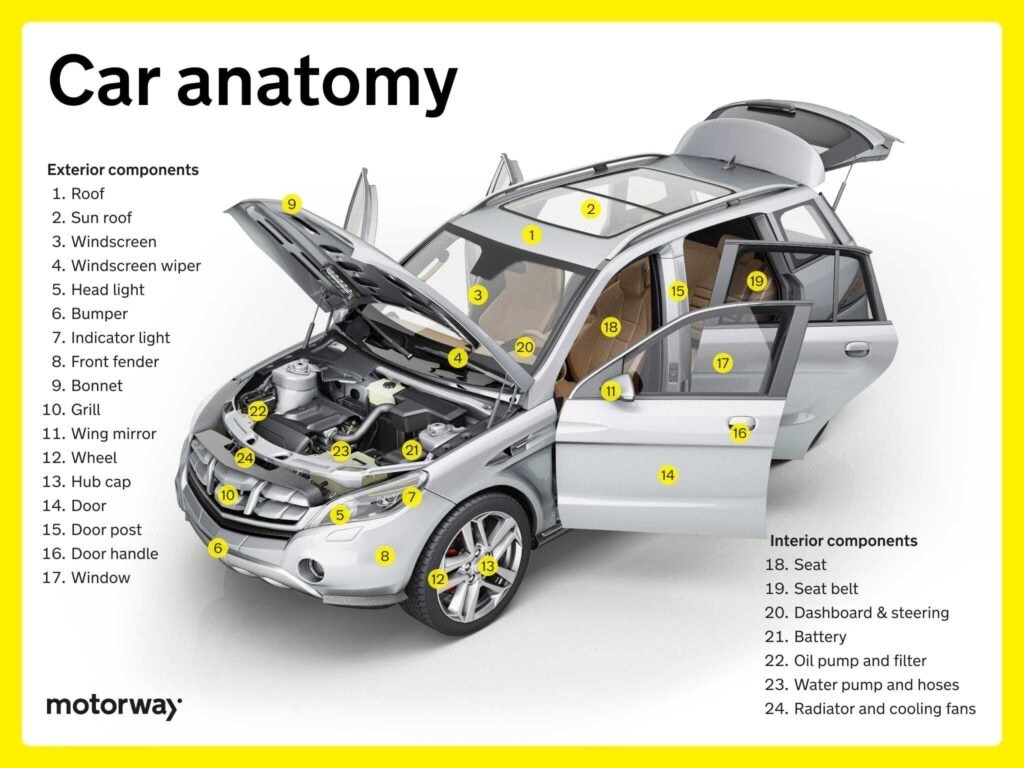
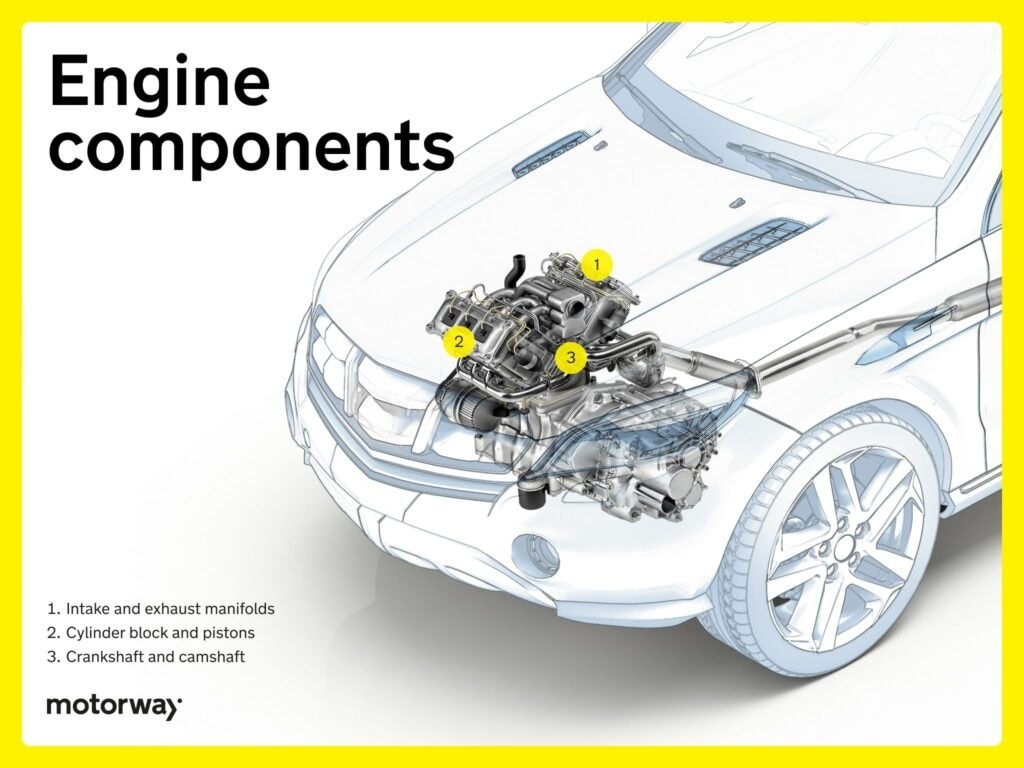
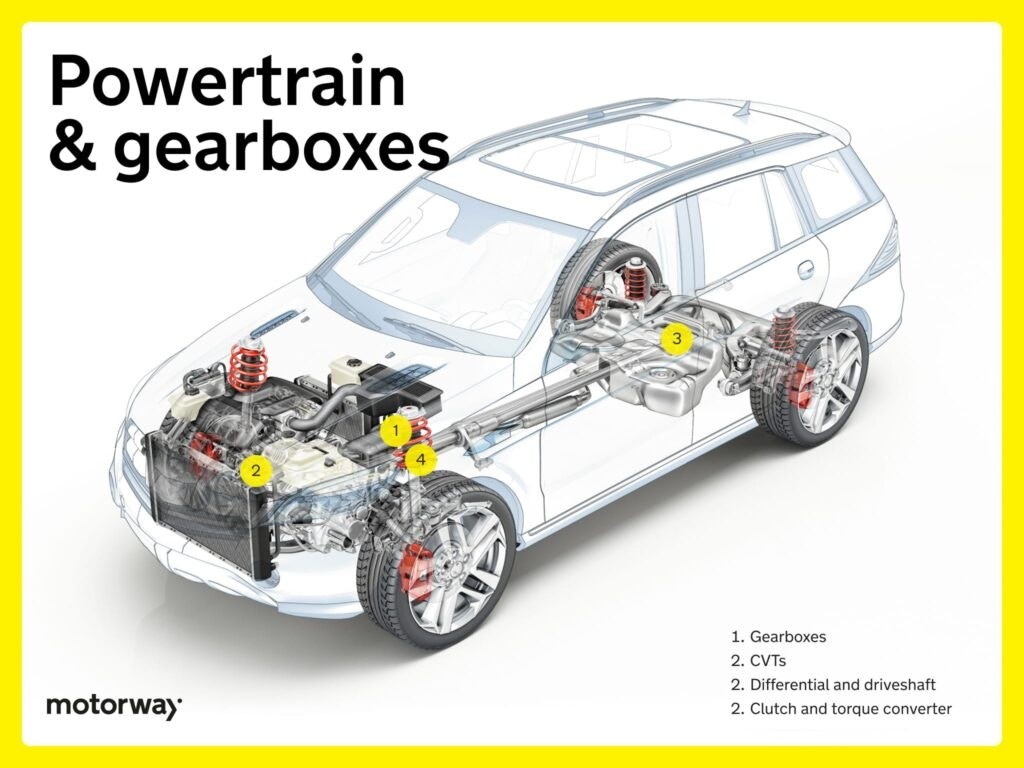
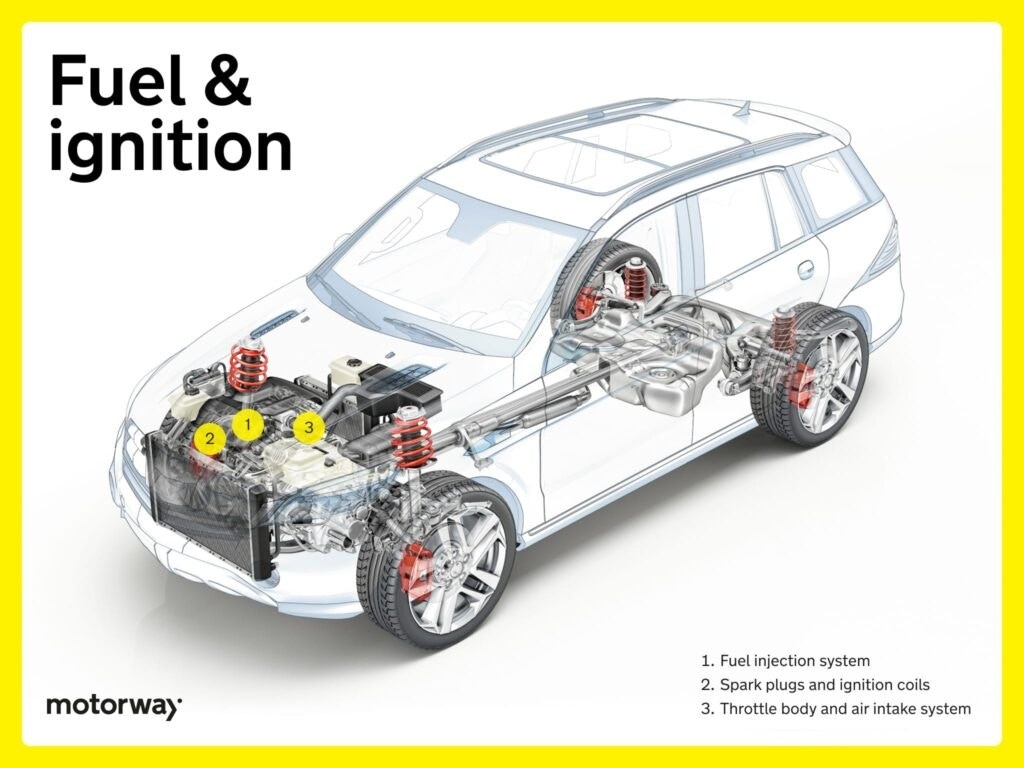
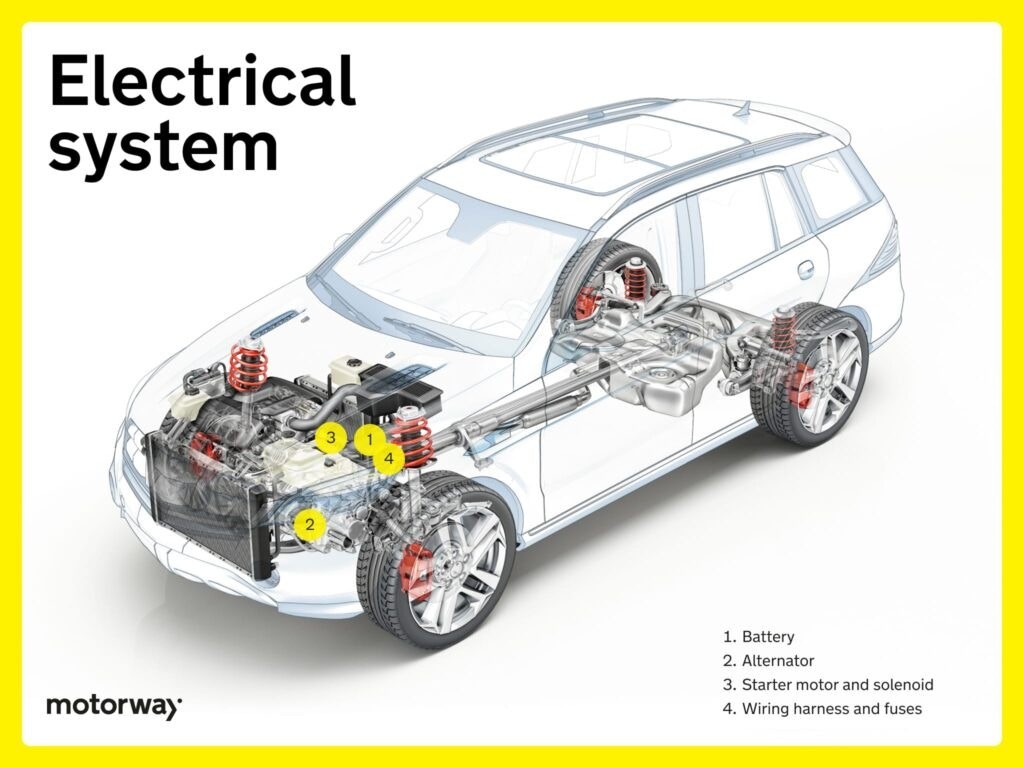
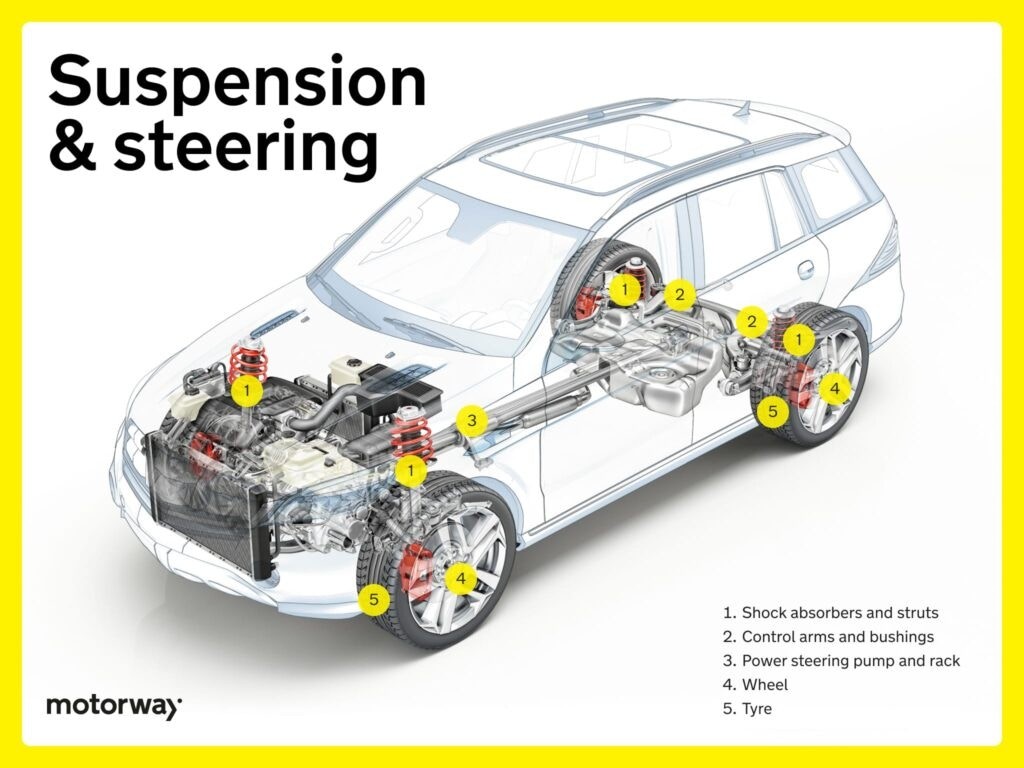
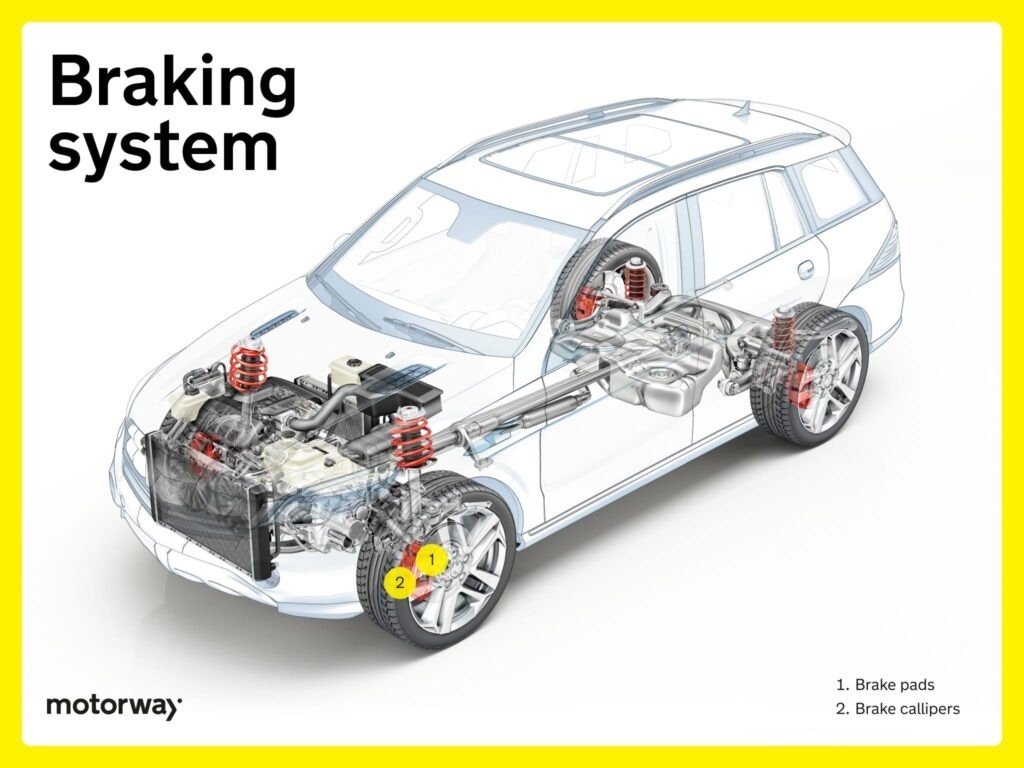
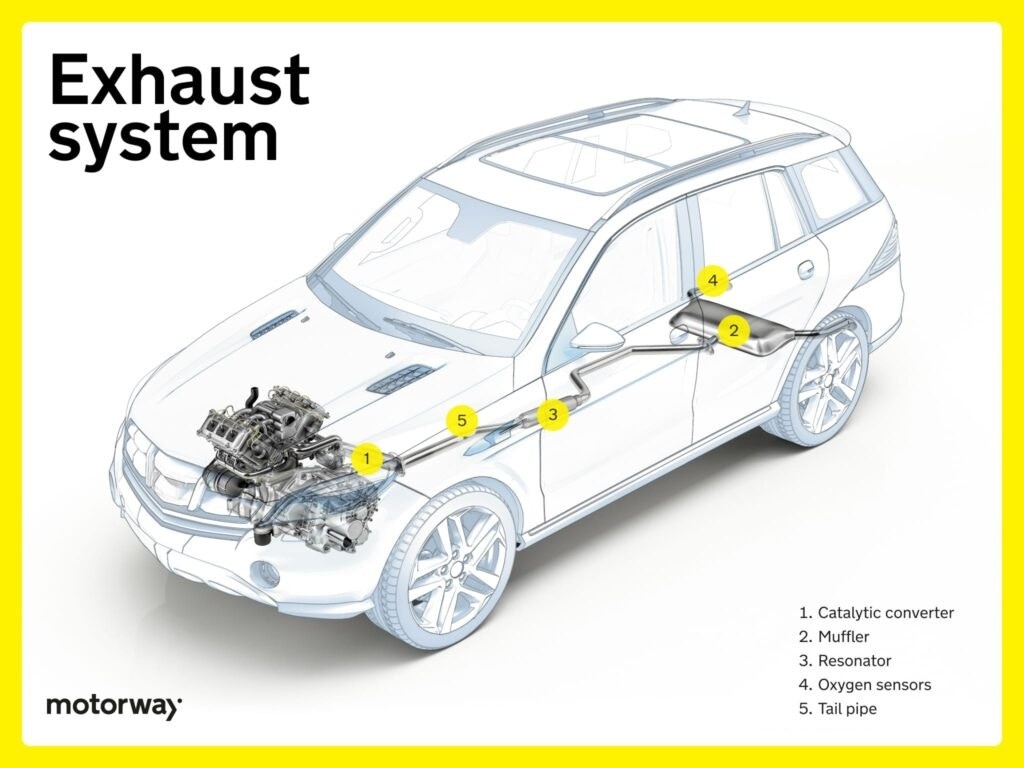
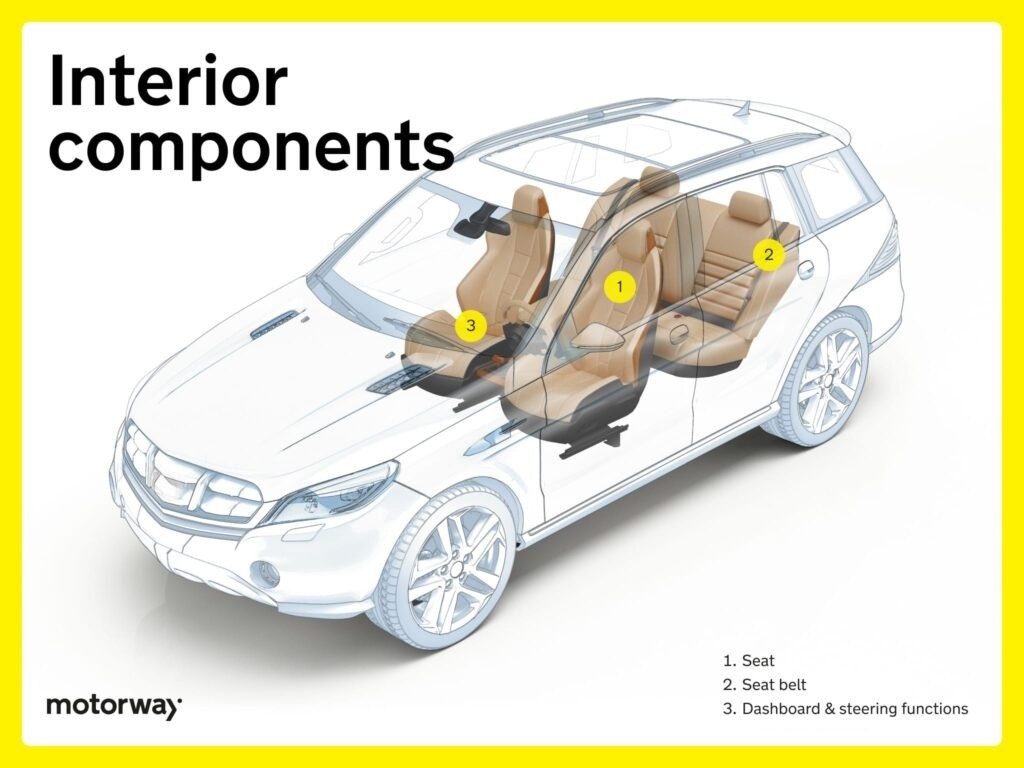
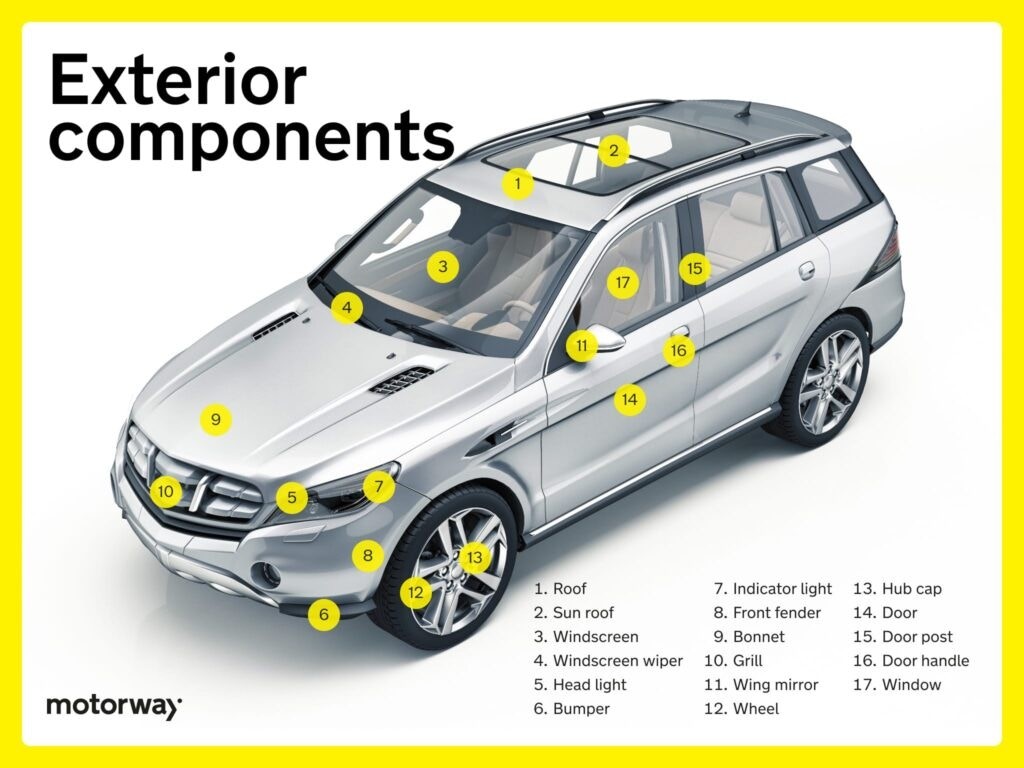
Wheel Construction Guide: Alloy vs. Steel Wheels
Wheel construction significantly impacts wheel performance, weight, and aesthetics. Different constructions cater to various needs and preferences:
- One-piece construction: The wheel is made from a single piece of material, either alloy or steel. This is a common and robust design for both alloy and steel wheels.
- Two-piece construction: The wheel consists of two parts, a center and an outer rim, joined together. Often found in performance or custom wheels, allowing for some customization.
- Three-piece construction: The wheel has three parts: a center, an outer rim, and an inner hoop. This modular design offers greater customization and is popular in aftermarket wheels.
- Forged construction: Forged wheels are made from a single block of metal compressed under high pressure. This process results in wheels that are stronger and lighter than cast wheels, often used in high-performance and racing applications.
- Multi-piece construction: Wheels made from multiple components, offering versatility in sizing and customization.
Material choice also plays a role:
- Alloy wheels: Made from aluminum or magnesium alloys. They are lighter than steel wheels, improve heat dissipation from brakes, and enhance vehicle appearance.
- Steel wheels: Made from steel, known for their strength and durability. Heavier than alloy wheels but more cost-effective and suitable for rugged conditions.
Tyre Pressure Monitoring System (TPMS)
The Tyre Pressure Monitoring System (TPMS) is a safety feature that continuously monitors the air pressure inside each tyre. Sensors in each wheel transmit real-time pressure data to the vehicle’s computer.
If tyre pressure deviates from the recommended levels, the TPMS alerts the driver with a warning light on the dashboard. Maintaining proper tyre pressure improves safety, fuel efficiency, tyre lifespan, and handling.
FAQs
What Parts Are Under a Car?
Beneath a car, you’ll find essential systems and components including the engine, transmission, suspension system, exhaust system, driveshaft, differential, and fuel system. These parts work interdependently to ensure the vehicle’s functionality and performance.
How Many Car Parts Are on a Car?
The number of individual parts in a modern car can exceed 30,000. This vast number encompasses components across various systems, reflecting the complexity of automotive engineering. Electric vehicles generally have fewer parts due to their simpler powertrain, relying on electric motors and batteries instead of complex mechanical engines.
What Are the Important Parts of a Vehicle?
Crucial vehicle parts include the engine, transmission, braking system, steering system, suspension, and electrical components. Each of these systems plays a vital role in ensuring the vehicle’s safe and reliable operation.
What Parts of a Car Can Be Sold Separately?
Various car parts can be sold individually, including engines, transmissions, body panels, doors, lights, wheels, and specific electrical components. The market for used car parts provides options for repairs, replacements, and upgrades.
Why Is There a Shortage of Car Parts?
Car part shortages can arise from various factors, including disruptions to global supply chains, increased demand for specific components, manufacturing bottlenecks, raw material scarcity, and global events impacting production and logistics.
Need to Sell Your Car?
Looking for more information about car ownership, maintenance, and selling your car? Explore our comprehensive guides here for insights on topics ranging from Clean Air Zones and car tax to number plate changes and part exchange.